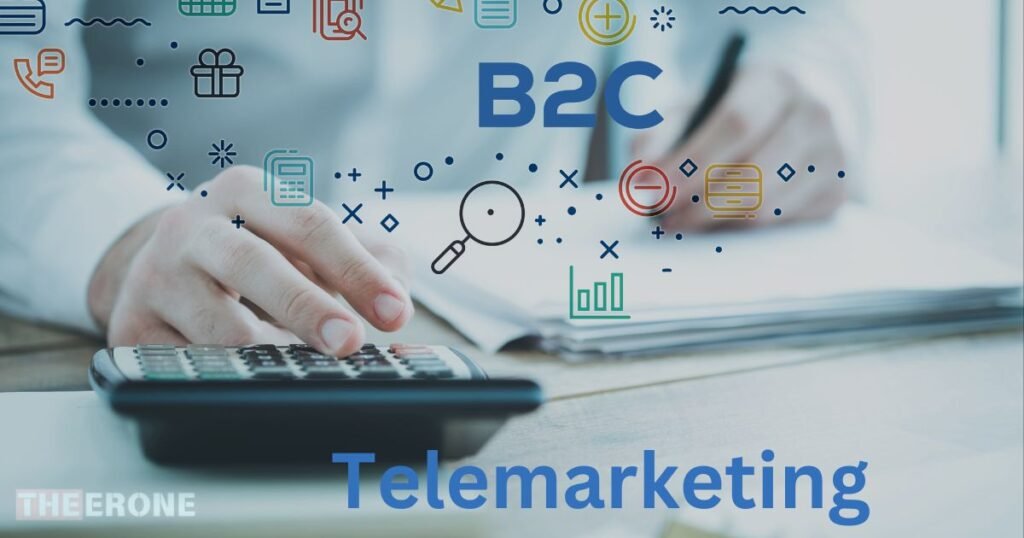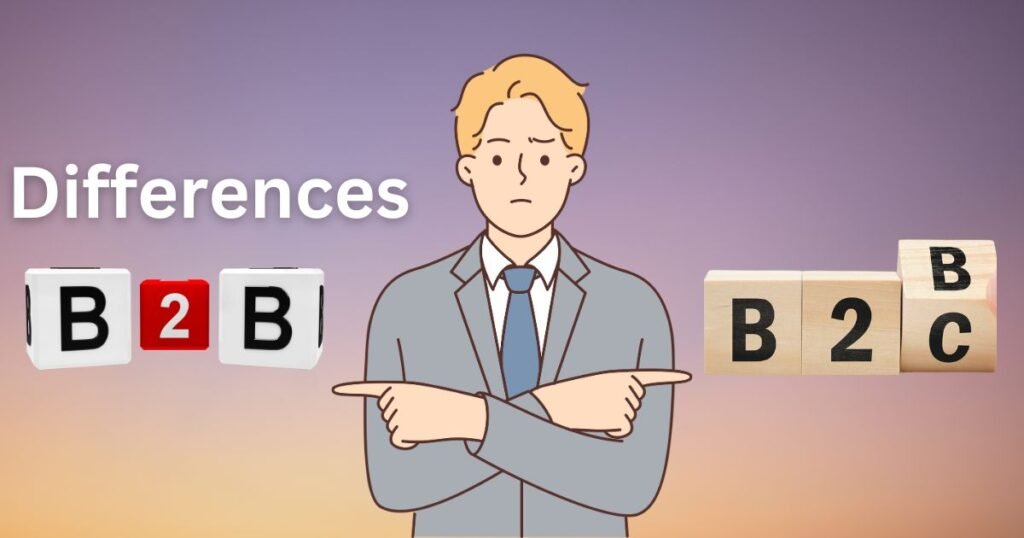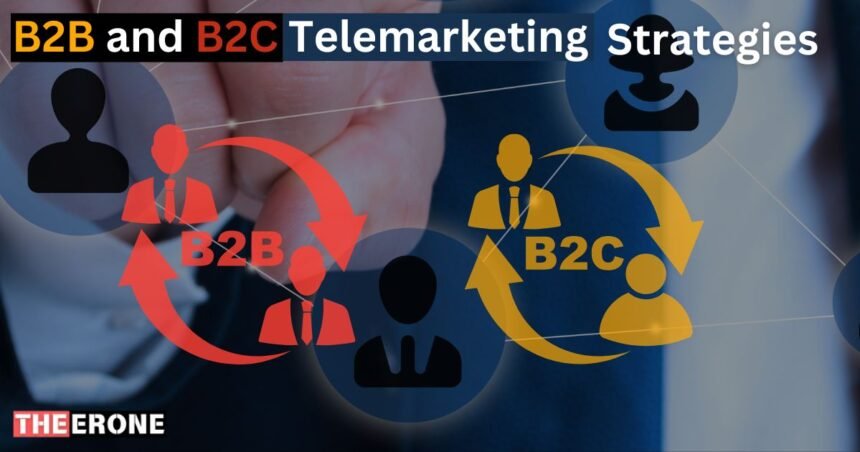Telemarketing is a service that connects companies with potential clients over the phone. It sparks interest, offers valuable information, and opens opportunities for client interaction and decisions. By understanding customer needs, telemarketing provides tailored solutions, making it a consultative and personalized selling process. Unlike digital tools, a conversation with a skilled person builds trust and enhances decision-making. Instead of generic ads, firms can present customized deals that suit individual tastes.
Telemarketing is vital for generating leads and maintaining client relationships. Businesses can use it to schedule appointments, get feedback, and learn more about their clients’ needs. Through meaningful conversations, telemarketing creates value by offering solutions that meet customer expectations. Its customized strategy ensures increased audience engagement and fosters enduring trust between companies and their target market.
Telemarketing techniques must be tailored to the audience type: consumers (B2C) or corporations (B2B). B2B telemarketing aims to build business-to-business connections and offer answers to business problems. B2C telemarketing, on the other hand, seeks to quickly pique interest and provide goods or services for specific needs. By addressing the unique needs of every audience type, customizing these tactics ensures improved results.
In this post we will learn in detail about What are B2B and B2C telemarketing strategies.
What is B2B Telemarketing?
One kind of direct marketing done over the phone to target businesses is called business-to-business (B2B) telemarketing. Its main goal is building ties with institutional or organizational clients rather than with individuals. This strategy allows companies to interact with decision-makers directly and bypass brokers. B2B telemarketing usually takes a consultative approach and has lengthier sales cycles. Building trust and offering solutions that cater to the unique demands of businesses are the main goals.
Also Read: What Are Two Types of Direct Mail Advertising?
Target Audience
Businesses, decision-makers, and organizations are the target audience for business-to-business telemarketing. It is meant for professionals who make decisions about collaborations or transactions. These could include CEOs, managers, or procurement officers who value detailed and customized communication.
Goals of B2B Telemarketing
- Lead Generation: B2B telemarketing helps identify and attract potential customers interested in your products.
- Appointment Setting: It schedules meetings or calls to further discuss business opportunities and solutions.
- Building Long-Term Partnerships: The focus is on creating lasting relationships that lead to future collaboration.
This strategy builds brand awareness, gathers feedback, and uncovers new business opportunities. By adopting B2B telemarketing, companies can professionally introduce their services and understand market trends.
Key Strategies for B2B Telemarketing
Research and Personalization
Research the target companies and their key decision-makers to understand their needs. Personalize your pitches to address the specific business goals of the companies. Tailored communication shows that you value their time and understand their challenges. This step increases the chances of creating meaningful and productive conversations.
Also Read: What are the Three Pillars of Nonprofit Marketing?
Focus on Building Relationships
Focus on building trust with prospects by using clear and professional communication. Relationships take time, so nurture leads by providing value in every interaction. Instead of rushing for immediate sales, emphasize long-term partnerships that benefit both sides. Strong relationships often lead to repeat business and positive referrals.
Use Data-Driven Insights
Use analytics and CRM platforms to learn important information about prospective clients and their sectors. Use this data to monitor consumer behavior and pinpoint preferences to enhance your telemarketing efforts. Using data to inform your decisions, you may provide customized options that meet your clients’ needs.
Offer Value
Offer solutions that precisely tackle the issues faced by the companies you are aiming to reach. Emphasize your product’s advantages, such as operational effectiveness and ROI (return on investment). When businesses see how your services successfully address their problems, they are more likely to engage.
Follow-Up Consistently
Continue following up with prospects regularly to stay in touch and stay on their radar. Remind them of your value offer with phone calls and emails. When prospects are ready to choose, a persistent follow-up technique guarantees they will remember your offer and show your commitment to them.
What is B2C Telemarketing?

One direct marketing strategy that focuses on calling particular consumers is business-to-consumer (B2C) telemarketing. To provide goods or services that fit their lives, it concentrates on their specific wants and preferences. B2C telemarketing, in contrast to B2B, involves emotionally charged choices and shorter sales cycles. The approach is often personalized to create interest and inspire quick purchasing actions.
Target Audience
B2C telemarketing’s target audience includes individual customers who decide based on their preferences. These customers could be retirees seeking specific goods, young professionals, or families. Effective communication helps them feel valued and encourages them to trust the brand.
Goals of B2C Telemarketing
- Drive Immediate Sales: The main goal is quickly converting calls into completed purchases.
- Promote New Products or Services: B2C telemarketing introduces customers to the latest offers and promotions.
- Enhance Brand Awareness: Promoting the brand’s message helps build a strong connection with consumers.
By addressing personal needs and creating emotional connections, B2C telemarketing becomes an effective tool for customer engagement.
Key Strategies for B2C Telemarketing
Understand Your Target Audience
Segment your customers into groups based on demographics, preferences, and buying behaviors. This allows you to tailor your calls to fit the specific interests of each group. Create targeted scripts that address the needs and wants of different customer segments. Understanding your audience helps build connections and improves the chances of making a sale.
Use an Engaging Approach
Start your calls with friendly, engaging introductions to grab the customer’s attention. Quickly build rapport by using a conversational tone and showing genuine interest in their needs. People are more likely to respond positively when they feel comfortable and valued.
Focus on Benefits
Highlight the benefits of your product or service rather than focusing on technical details. Explain how it solves common problems or makes life easier for the customer. Showing how your offer improves their experience makes it easier for them to decide.
Keep It Short and Simple
Deliver your message concisely and with compelling points that keep the customer’s attention. Avoid overwhelming them with too much information or unnecessary details. A simple and focused call increases the chances of a successful outcome.
Leverage Promotions and Offers
Use limited-time discounts or special promotions to create urgency and encourage quick decisions. Highlight value-added benefits, such as free delivery or extended warranties, to make your offer more appealing. Promotions help turn interested consumers into loyal customers.
Differences Between B2B and B2C Telemarketing

Target Audience
B2B telemarketing focuses on businesses, targeting decision-makers and organizations with professional needs. B2C telemarketing, on the other hand, aims at individual consumers, addressing their personal preferences and lifestyles. These different audiences require unique strategies and tailored communication styles.
Sales Cycle
The sales cycle in B2B telemarketing is typically longer and more complex, involving multiple stakeholders. In contrast, B2C telemarketing has shorter cycles, as individual consumers often make decisions quickly. Each type of telemarketing requires a customized approach to manage the sales process effectively.
Approach and Communication Style
B2B telemarketing uses a professional and consultative approach to build trust and long-term relationships. B2C telemarketing, however, focuses on engaging and emotional communication to connect with individual needs. Understanding these differences helps businesses achieve better results in both areas.
Differences Between B2B and B2C Telemarketing
| Aspect | B2B Telemarketing | B2C Telemarketing |
| Target Audience | Businesses and decision-makers | Individual consumers |
| Sales Cycle | Longer and involves multiple stakeholders | Shorter and focuses on quick decisions |
| Communication Style | Professional and consultative | Engaging and emotionally driven |
| Goals | Build relationships, generate leads | Drive immediate sales, promote products |
| Focus | Highlight ROI and efficiency | Emphasize benefits and personal value |
Best Practices for Both B2B and B2C Telemarketing
Train Telemarketing Teams
Provide specialized training to telemarketing teams to address B2B and B2C audiences’ unique needs. Ensure that teams understand their target audience’s preferences, pain points, and expectations. Skilled and knowledgeable teams build trust and deliver better results during calls.
Leverage Technology
Use CRM tools to manage leads efficiently and track customer interactions. Automate repetitive tasks like follow-up reminders to save time and focus on meaningful conversations. Technology improves productivity and helps telemarketers deliver personalized solutions to prospects.
Comply with Regulations
To maintain compliance and customer trust, follow telemarketing laws, including honoring Do Not Call lists. Staying informed about telemarketing guidelines protects businesses from legal issues and improves their reputation. Ethical practices ensure long-term success in telemarketing campaigns.
FAQ’s
Is telemarketing B2B or B2C?
Telemarketing can be both B2B and B2C. B2B focuses on contacting businesses and decision-makers. B2C telemarketing targets individual consumers, aiming to promote products or services and generate sales through direct phone conversations.
What is B2B vs. B2C content strategy?
B2B content strategies aim to build trust and provide value for businesses. They focus on facts, ROI, and solutions. B2C strategies are more emotional, focusing on engaging customers, creating excitement, and driving quick purchasing decisions.
What are the 7 differences between B2B and B2C?
B2B targets businesses that use longer sales cycles and professional communication. B2C targets consumers, has shorter cycles, and uses emotional appeals. Key differences include audience type, buying decisions, communication style, lead nurturing, content approach, sales process, and marketing goals.
Conclusion
Telemarketing is a potent tool for linking companies with their target market. To satisfy the different needs of their separate audiences, B2B and B2C telemarketing require customized approaches. To increase engagement and trust, businesses should focus on knowing their target and personalizing their interactions accordingly.
Telemarketing methods are more likely to succeed using an organized and data-driven strategy. Businesses can optimize their telemarketing effectiveness by utilizing technology, training employees, and following moral standards. Strong client relationships and long-term growth result from putting the customer’s needs first and acting correctly.












